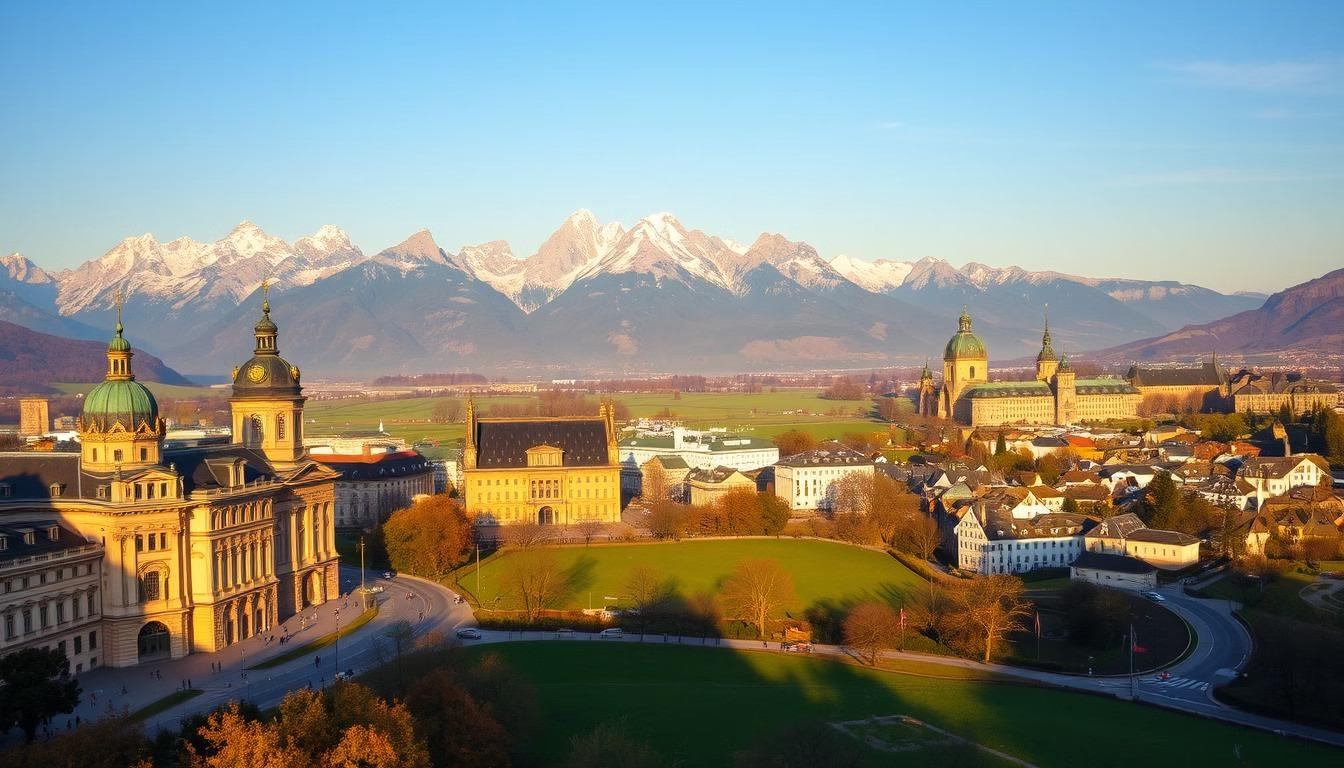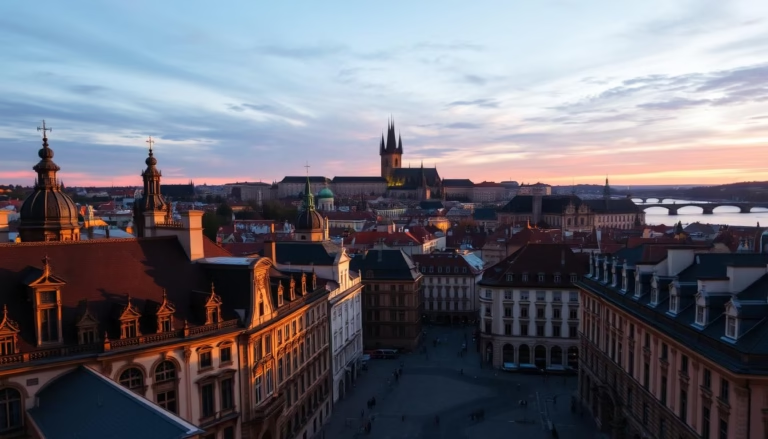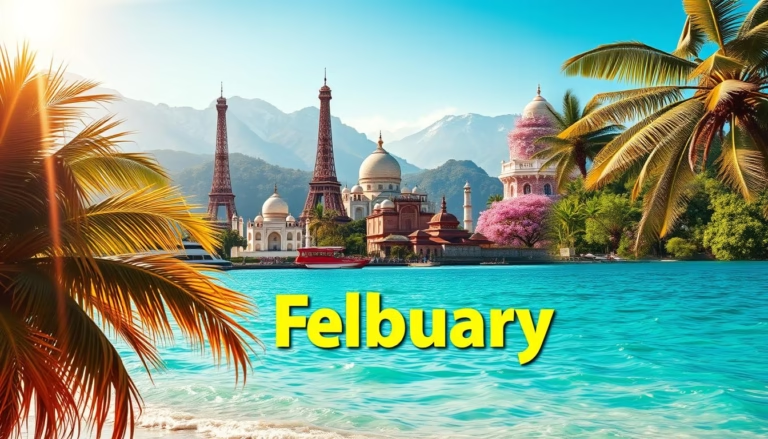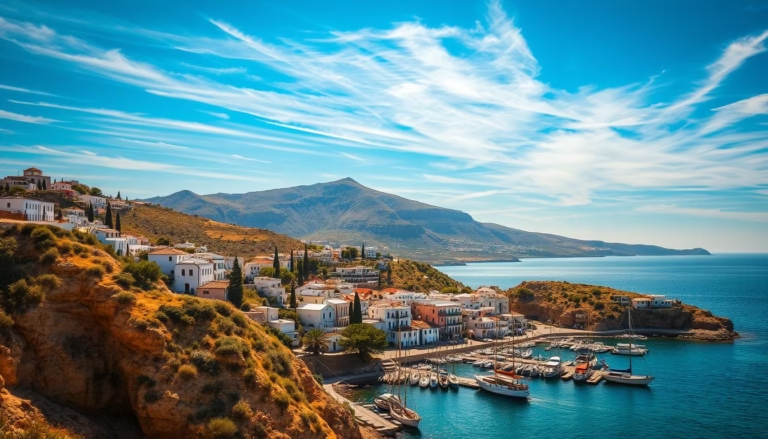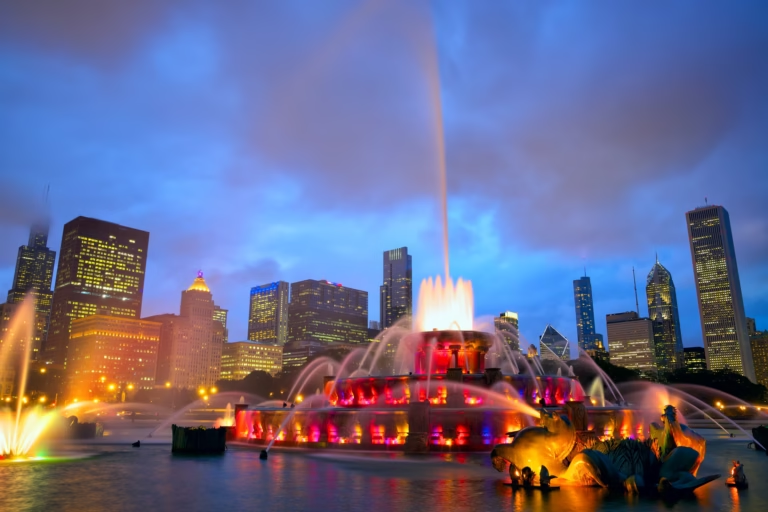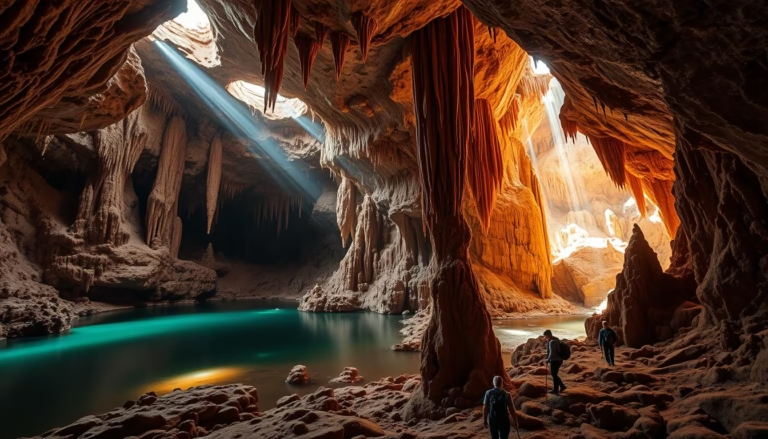Best Cities to Visit in Austria: Top Places to Go
Did you know Austria packs 12 UNESCO World Heritage Sites into a country smaller than Maine? From Baroque palaces to entire medieval town centers, this Alpine nation punches far above its weight class for cultural treasures. But with so many iconic places competing for attention, how do you choose where to focus your trip?
Unlike generic “top 10” lists, this guide shares real insights from travelers who’ve road-tested every cobblestone. We’ve skied the Tyrolean slopes, sipped wine in Wachau Valley vineyards, and debated Mozartkugel recipes with locals – all to separate truly exceptional destinations from overhyped stops.
You’ll discover imperial capitals where horse-drawn carriages clip-clop past modern art museums, and lakeside villages so picturesque they’ve inspired Disney castles. Our seven standout destinations cater to every travel style: adrenaline junkies chasing mountain thrills, history buffs decoding Habsburg legacies, and shutterbugs capturing storybook scenes.
Key Takeaways
- Recommendations focus on unique local experiences rather than crowded tourist checklists
- Mix of world-famous landmarks and lesser-known regions for balanced itineraries
- Insights validated through multiple visits across seasons and local collaborations
- Options tailored for outdoor adventures, cultural deep dives, and romantic getaways
- Practical tips to avoid common pitfalls in overvisited areas
Introduction
Imagine sipping coffee where emperors once dined, then hiking trails that inspired Mozart’s symphonies. Austria delivers this magical contrast daily—alpine meadows meet gilded palaces, creating endless discoveries.
What Makes Austria a Must-Visit Destination?
Few European countries pack imperial grandeur and natural drama into such compact spaces. Over 60% of the land sits above 1,640 feet, yet you’ll find world-class opera houses between those peaks. UNESCO protects entire town centers here, like Hallstatt’s 7th-century salt-mining village frozen in time.
What truly sets the country apart? Versatility. You can ski fresh powder by morning and attend a Vienna Philharmonic concert by evening. Families love interactive castles like Hohenwerfen, while couples find romance in vineyard-lined Danube cruises.
| Season | Activities | Crowd Level | Avg. Hotel Cost |
|---|---|---|---|
| Summer | Hiking, lake swimming | High | $180/night |
| Winter | Skiing, Christmas markets | Moderate | $220/night |
| Spring/Fall | Wine festivals, museums | Low | $140/night |
Overview of This Guide
We’ve road-tested every cobblestone to bring you authentic insights. Our recommendations skip tourist traps, focusing instead on local-approved gems. You’ll get practical tips for managing costs—like visiting Innsbruck’s Nordkette range via public transit to save $50+ on tours.
The following sections explore seven diverse regions. From Salzburg’s musical heritage to Bad Gastein’s thermal springs, each destination offers distinct flavors. We’ll help you match locations to your interests, whether that’s chasing Sound of Music filming spots or tasting pumpkin-seed oil in Styria.
Uncovering the Best Cities to Visit in Austria
Choosing where to explore in Austria feels like picking chocolates from a gourmet box—each destination offers its own rich flavor. Our selection process focused on authentic local experiences rather than Instagram metrics. We prioritized towns where culture shapes daily life and nature commands attention.

What Makes These Locations Special
Every recommendation serves a distinct purpose. Graz blends futuristic art with Renaissance courtyards, while Bad Gastein pairs Belle Époque architecture with natural thermal baths. Even industrial Linz surprises visitors with cutting-edge tech museums housed in repurposed factories.
| Destination | Unique Feature | Crowd Level | Ideal Trip Length |
|---|---|---|---|
| Hallstatt | Mountain-reflected lakes | Peak season: High | 1-2 days |
| Innsbruck | Ski-to-city access | Moderate | 3 days |
| Salzburg | Baroque music legacy | Summer: Very High | 2-4 days |
Tailoring Your Experience
Use this list like a mix-and-match menu. Short on time? Pair Salzburg’s musical landmarks with Hallstatt’s lakeside calm—they’re just 90 minutes apart. Planning a week-long trip? Combine Innsbruck’s slopes with Linz’s innovation hubs using Austria’s efficient rail system.
We’ve noted each location’s busy periods and hidden costs. For example, Hallstatt’s beauty comes with summer crowds, but visiting at sunrise rewards you with magical fog patterns over the lake. Our upcoming city guides reveal these local secrets and more.
Hallstatt: Austria’s Timeless Lakeside Gem
Hallstatt’s iconic wooden houses cling to mountainsides like jewelry on velvet. This lakeside village of 741 residents draws over a million visitors yearly, its UNESCO World Heritage status protecting 7,000 years of salt-mining history. China and Turkey built full-scale replicas, but nothing matches the original’s misty Alpine glow.
Scenic Views and Historic Charm
Dawn transforms Lake Hallstatt into liquid silver, revealing why photographers brave early mornings. The 16th-century Marktplatz reflects perfectly in still waters, framed by Dachstein Mountain’s snowcaps. Don’t miss the bone chapel displaying 1,200 painted skulls—a tradition from cramped burial grounds.
Tips for a Memorable Visit
Outsmart crowds by arriving before 9 AM or staying overnight. The Salt Mine tour thrills with wooden slides miners used centuries ago. For epic views, hike to Skywalk platform or take the funicular to Rudolf’s Tower.
Parking? Nearly impossible. Arrive via train-boat combo from Attnang-Puchheim station. Visiting October-April means fewer people but check weather—some businesses close in deep winter. Pro tip: Local cafes serve Hallstätter Hochzeitsuppe, a creamy soup perfect for chilly lakeside evenings.
Innsbruck: The Alpine Adventure Capital
Where else can you ski Olympic slopes and walk through a 15th-century arcade in the same afternoon? Innsbruck’s magic lies in its alpine-meets-urban energy. Medieval spires pierce skies where paragliders soar, while cable cars whisk hikers to 7,400-foot peaks above the city’s cobblestone heart.
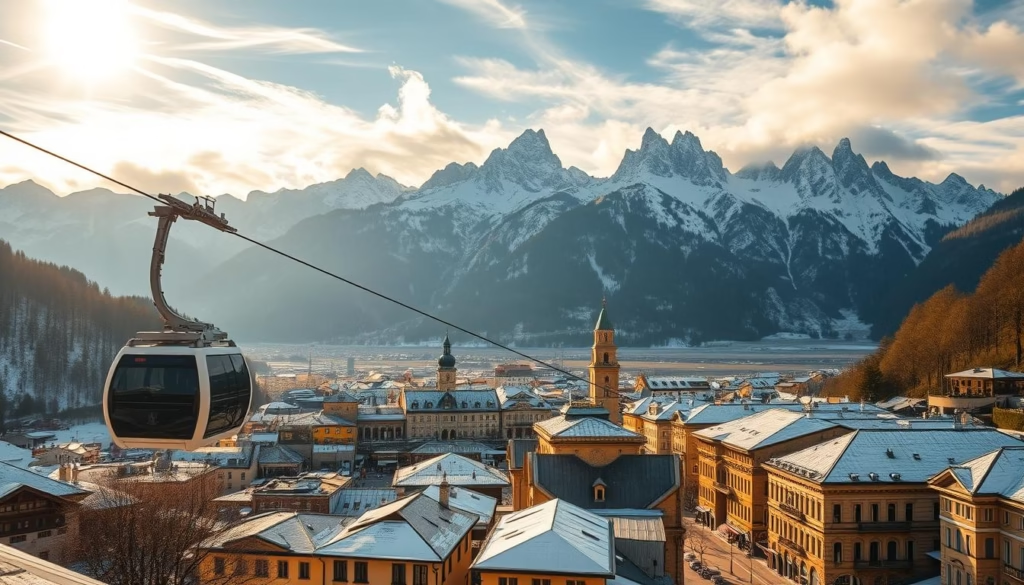
Where History Meets High Altitude
The glittering Golden Roof isn’t just a photo stop—it’s Emperor Maximilian I’s 15th-century VIP box for jousting tournaments. Nearby, Ambras Castle houses Renaissance armor so intricate you’ll swear it’s dragon skin. “This city doesn’t just display history—it lets you touch it,” says local guide Martina Huber.
Winter sports fans geek out over Olympic landmarks. The Bergisel Ski Jump’s observation deck offers stomach-dropping valley views. For thrill-seekers, the Nordkette cable car delivers Austria’s steepest ascent to glacier hiking trails.
| Attraction | Experience | Distance from Center |
|---|---|---|
| 007 Elements | Cinematic spy tech exhibits | 25 minutes |
| Swarovski Worlds | Glittering crystal chambers | 15 minutes |
| Schwaz Mine | Underground silver tunnels | 35 minutes |
Fuel Tyrolean adventures with Kaspressknödel (cheesy dumplings) at Café Central. Pro tip: The Innsbruck Card covers transit and 22 attractions—perfect for maximizing mountain time and minimizing costs.
Salzburg: The Musical Baroque Marvel
Where cobblestone streets hum with melodies of centuries past, Salzburg stands as a living symphony of baroque architecture and cultural resonance. This compact city of 158,000 residents wears its UNESCO World Heritage status like a crown, with every alley revealing storybook charm.
Fortress Views and Mozart’s Legacy
Hohensalzburg Fortress dominates the skyline like a stone guardian. Ride the funicular to its ramparts for panoramic views stretching to the Bavarian Alps. Below lies Getreidegasse street, where Mozart’s childhood home still displays his tiny violin.
Evening brings his music to life in candlelit halls. Local musicians perform Eine Kleine Nachtmusik with period instruments at venues like Mirabell Palace. “You don’t just hear Mozart here—you feel his presence in the walls,” says concertmaster Lukas Weber.
Exploring Sound of Music Landmarks
Fans of the iconic film flock to Mirabell Gardens, where Maria and the children danced around the Pegasus Fountain. The cathedral square hosted the wedding scene, though locals chuckle at Hollywood’s version of their history.
For quieter moments, walk the Hellbrunn Palace grounds where the gazebo scene was filmed. Pro tip: Book Sound of Music tours for 8 AM to avoid crowds. Cap the day with schnitzel at St. Peter Stiftskulinarium—they’ve served meals since 803 AD.
| Experience | Local Insight | Best Time |
|---|---|---|
| Fortress Visit | Buy combo ticket with museums | Weekday mornings |
| Mozart Concert | Look for student performances | July-August |
| Old Town Walk | Follow hidden courtyards | Golden hour |
Graz: Where History Meets Modern Creativity
Step into a city where Renaissance courtyards host holographic art installations and medieval clock towers overlook AI-powered exhibitions. Graz redefines urban exploration by blending six centuries of architecture with boundary-pushing design concepts. Its secret sauce? A 50,000-strong student population that keeps this UNESCO World Heritage site buzzing with experimental energy.
Old Town Elegance and Contemporary Art
The Old Town feels like walking through a living history book. Baroque palaces rub shoulders with Gothic cathedrals, their spires framing squares where street performers reinterpret classical music. Don’t miss the Luegg Quarter—its pastel buildings feature intricate frescoes dating to the 1600s.
Modern marvels steal the show too. The Kunsthaus Graz, nicknamed “The Friendly Alien,” morphs into a glowing blue blob at night. Inside, rotating exhibits challenge traditional art forms. Cross the Mur River via the Murinsel—a floating steel-and-glass seashell hosting avant-garde concerts.
| Attraction | Type | Experience |
|---|---|---|
| Schlossberg Hill | Historical | Panoramic city views from 16th-century clock tower |
| Kunsthaus Graz | Modern | Interactive digital art exhibitions |
| Murinsel | Modern | Riverside coffee sessions in futuristic design |
| Landhaus Courtyard | Historical | Renaissance arcades with whispering wall effects |
Nightlife here thrives in converted factories serving pumpkin-seed cocktails. Local guide Clara Berger notes: “Our students treat the heritage site like a creative laboratory—you’ll find pop-up galleries in 500-year-old cellars.”
For the perfect day, climb Schlossberg Hill at sunset. Watch golden light dance between medieval rooftops and the Kunsthaus’ curved façade—a visual metaphor for Graz’s time-traveling charm.
Linz: A Fusion of Industrial Heritage and Innovation
Where blast furnaces once roared, digital art now illuminates the night sky. Linz has reinvented itself as Austria’s city of tomorrow while honoring its manufacturing roots. This Danube River hub earned UNESCO’s City of Media Arts title by turning factories into creative labs and steel mills into interactive galleries.
Tech-Forward Attractions in a Historic Setting
The ARS Electronica Center makes science feel like playtime. Touch screens react to body heat, robots paint abstract art, and VR headsets transport you to alien ecosystems. “We’re not just a museum—we’re a time machine showing where technology could take us,” explains curator Dr. Markus Wippenbeck.
Cross the river to Lentos Art Museum, where the glass façade becomes a light sculpture after dark. Inside, modern masterpieces share space with holographic installations. For history buffs, Linz Castle blends medieval towers with sleek glass additions housing Roman artifacts.
Local chefs prove innovation isn’t just for museums. Try Mosthendl (cider-roasted chicken) at riverside taverns or molecular gastronomy at Hauben restaurants. The city’s nightlife thrives in repurposed warehouses—think craft cocktails served where locomotives were once repaired.
Pro tip: Visit during September’s Ars Electronica Festival when the whole city becomes part of a living tech exhibit. Take a Danube River cruise at sunset to see how Linz bridges Austria’s past and future—smokestacks stand beside LED-lit towers like chapters in an open history book.
Bad Gastein: The Natural Spa Retreat
Where steaming thermal waters meet crumbling grandeur, Bad Gastein writes its own rules. This alpine town drapes itself across a mountain gorge like a necklace slipping off a royal’s shoulders. A roaring waterfall splits its Belle Époque buildings, creating a scene where nature and nostalgia collide spectacularly.
Waterfalls, Thermal Spas, and Alpine Hiking
The Gasteiner Ache river thunders through the town center, misting pastel hotels that once hosted European aristocracy. Don’t let peeling paint fool you—this faded elegance adds character. Locals joke the 19th-century architecture is “perfectly imperfect,” with gold-leaf ceilings hiding behind weathered facades.
Thermal springs here work miracles. Soak in radon-rich waters at Felsentherme Spa, where miners first discovered healing properties centuries ago. Afterward, tackle the Gasteiner Höhenweg trail—it serves alpine vistas on a silver platter. In summer, wildflowers frame views of Hohe Tauern National Park’s glaciers.
Winter transforms the area into a ski resort with quirky charm. Ride Stubnerkogel’s gondola to slopes where you’ll share lifts with Olympic trainees. Pro tip: Night skiing here feels magical, with floodlights bouncing off the waterfall’s icy cascade.
